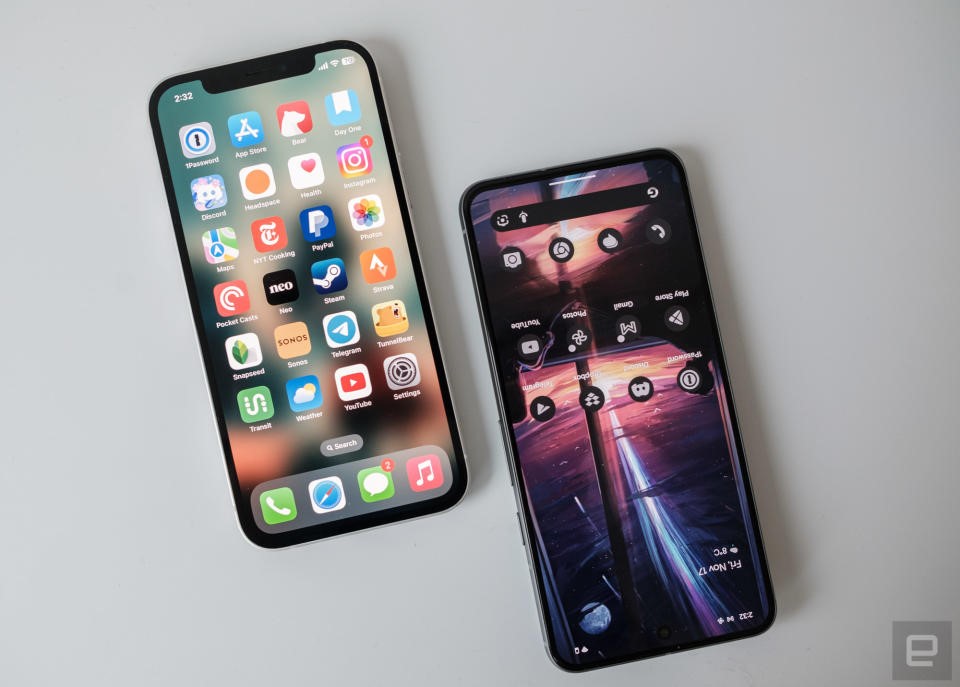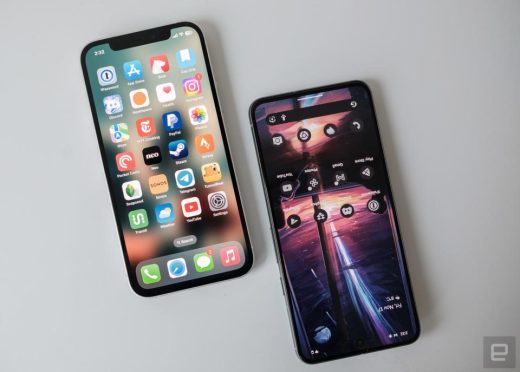What is RCS and how is it different from SMS and iMessage?
What is RCS and how is it different from SMS and iMessage?
Or the story of why we can’t have nice things.

In a dramatic reversal, Apple announced this week it would offer RCS support starting in 2024. The decision effectively ends one of the most protracted and confusing conflicts between iOS and Android. If you’re not sure what any of that means, don’t worry: We’re about to lay out what could change with Apple’s adoption of the GSMA’s next-generation messaging protocol.
What is SMS?
Short Message Service (SMS) is one of the most ubiquitous messaging protocols on the planet. It dates back to the early days of mobile technology. In December 1992, Neil Papworth, at the time an engineer at Vodafone, sent the first SMS text message when he wished his boss “Merry Christmas.” By the start of 2011, approximately 80 percent of all mobile phone users globally — an estimated 3.5 billion people — were sending SMS messages every month.
In 2023, however, the standard has some notable drawbacks. SMS messages are limited to 160 characters, and texts you send can’t include photos, videos, audio or GIFs. For that, cell phones have long turned to a supporting protocol known as Multimedia Messaging Service (MMS), but it too has its share of technical limitations, including woefully small message size limits. SMS also doesn’t support end-to-end encryption.
But for all the ways SMS feels dated in an era dominated by instant messaging platforms, it has one defining advantage: SMS messages are routed through your carrier’s mobile network, meaning a data plan isn’t necessary to use the technology. That fact has meant SMS has often served as a fallback for more advanced protocols, including iMessage.
What is RCS?
RCS is short for Rich Communication Services, though sometimes it is also marketed as “Advanced Messaging.” Either way, it’s often positioned as a next-generation replacement for SMS and MMS. RCS allows users to take advantage of many features that were previously exclusive to over-the-top messaging platforms like WhatsApp.
For instance, the RCS Universal Profile includes full support for read receipts and typing indicators. It can also facilitate proper group chats, and allow users to send high-resolution images, video and audio clips. As of earlier this year, Google’s implementation of RCS also offers by default end-to-end encryption (E2EE) for both one-on-one and group chats.
Unlike SMS texts, RCS messages are routed over a mobile data connection or Wi-Fi link, with SMS functioning as a fallback. For that reason, the older protocol likely isn’t going anywhere anytime soon.
One thing that’s important to remember about RCS is that it is not and has never been envisioned as a replacement or competitor to instant messaging apps. At its heart, RCS is a communication protocol between mobile telephone carriers and between a phone and carrier. Taking advantage of RCS does not require signing up for a new service. As long as your phone and carrier support RCS, and you’re using a compatible app such as Messages by Google, you can take advantage of everything the protocol has to offer — provided, of course, the person or people you’re messaging meet those same requirements.
How does iMessage fit into all this?
Apple announced iMessage in June 2011, a few short months before Steve Jobs died later that same year. Unlike RCS, iMessage is a proprietary messaging protocol controlled exclusively by Apple and available (barring some unofficial workarounds) only on iPhone, iPad, Apple Watch and Mac devices. Starting in 2024, Apple plans to integrate support for RCS in its Messages app. However, at the moment the two protocols do not communicate with one another. As such, Apple’s Messages app will default to SMS/MMS when users attempt to send texts and media files to someone with an Android phone.
From the perspective of an iMessage user, it can feel like Android users are stuck in a bygone messaging era — even though the latter is not at fault for the situation. Due to iMessage’s reliance on SMS/MMS for Android communication, media files end up pixelated, there aren’t any read receipts or typing indicators and forget about trying to involve multiple iPhone and Android users in a single group chat.
How did we get here?
Although work on RCS began before Apple announced iMessage, the protocol had one major disadvantage that doomed it to a slow rollout. RCS is a multi-stakeholder project that includes the involvement of the GSMA, a trade body that represents the interests of the mobile communications industry at large. In 2015, Google took a more active role in the proliferation of RCS when it acquired Jibe Mobile. With Jibe’s technology as a base, it’s effectively Google that provides the glue that binds the RCS ecosystem together, but for a long time, the company did a poor job of aligning everyone involved in RCS toward a shared goal.
In fact, the early days of RCS were marked by false starts, with some carriers, including a group made up of AT&T, T-Mobile and Verizon forming a short-lived joint venture to push the protocol forward before eventually aligning themselves with Google. Even Samsung did its own thing for a while before it too eventually agreed to make Messages by Google the default messaging app it ships on phones in the US.
For that reason, Apple has had little reason to adopt RCS. After all, why would it give a bumbling competitor a freebie? And as recently as last year, it seemed there was little to no chance the situation was going to change anytime soon. “I don’t hear our users asking that we put a lot of energy into that,” Apple CEO Tim Cook told the Code Conference in 2022 when he was asked about RCS messaging. “Buy your mom an iPhone” was his final word on the matter.
But it was also last year that the European Union passed its landmark Digital Markets and Services Act (DMA). The legislation requires “gatekeepers” to not favor their own systems or limit third parties from interoperating within them. Gatekeepers are any company that meets specific financial and usage qualifications. Apple, according to the law, is one such company.
At the start of November, Google sent the European Commission arguing that iMessage violates the DMA. It’s probably not an accident that Apple’s RCS announcement coincided with the deadline for companies to file challenges to the DMA at the EU’s General Court. On Friday, the EU announced Apple is contesting its DMA assignments. The details of the company’s complaints aren’t public, but Bloomberg reported last week Apple was planning to challenge the gatekeeper designations of both iMessage and the App Store.
Does Apple’s support of RCS mean the end of green text bubbles on iPhone?
It’s too early to tell. On Thursday, Apple provided precious few details about how it plans to display and treat RCS messages on its devices. What’s more, the company did note that iMessage “will continue to be the best and most secure messaging experience for Apple users.” That said, even if you take that statement to mean iMessage will continue to display texts from non-Apple devices differently from those sent from an iPhone, iPad or Mac, Apple’s adoption of RCS will lead to a better user experience for both iOS and Android users.
Again, Apple needs to provide specifics, but it’s easy to envision a future where its Messages app, thanks to RCS, properly displays high-resolution images and videos sent from Android phones, and allows both iOS and Android users to take part in group chats without something breaking. On Thursday, Apple also said it would work with GSMA members to improve the existing Universal Profile protocol, with a focus on adding end-to-end encryption to the standard.
Of course, whether that interoperability ends the stigma around green bubbles is harder to answer.
(24)


